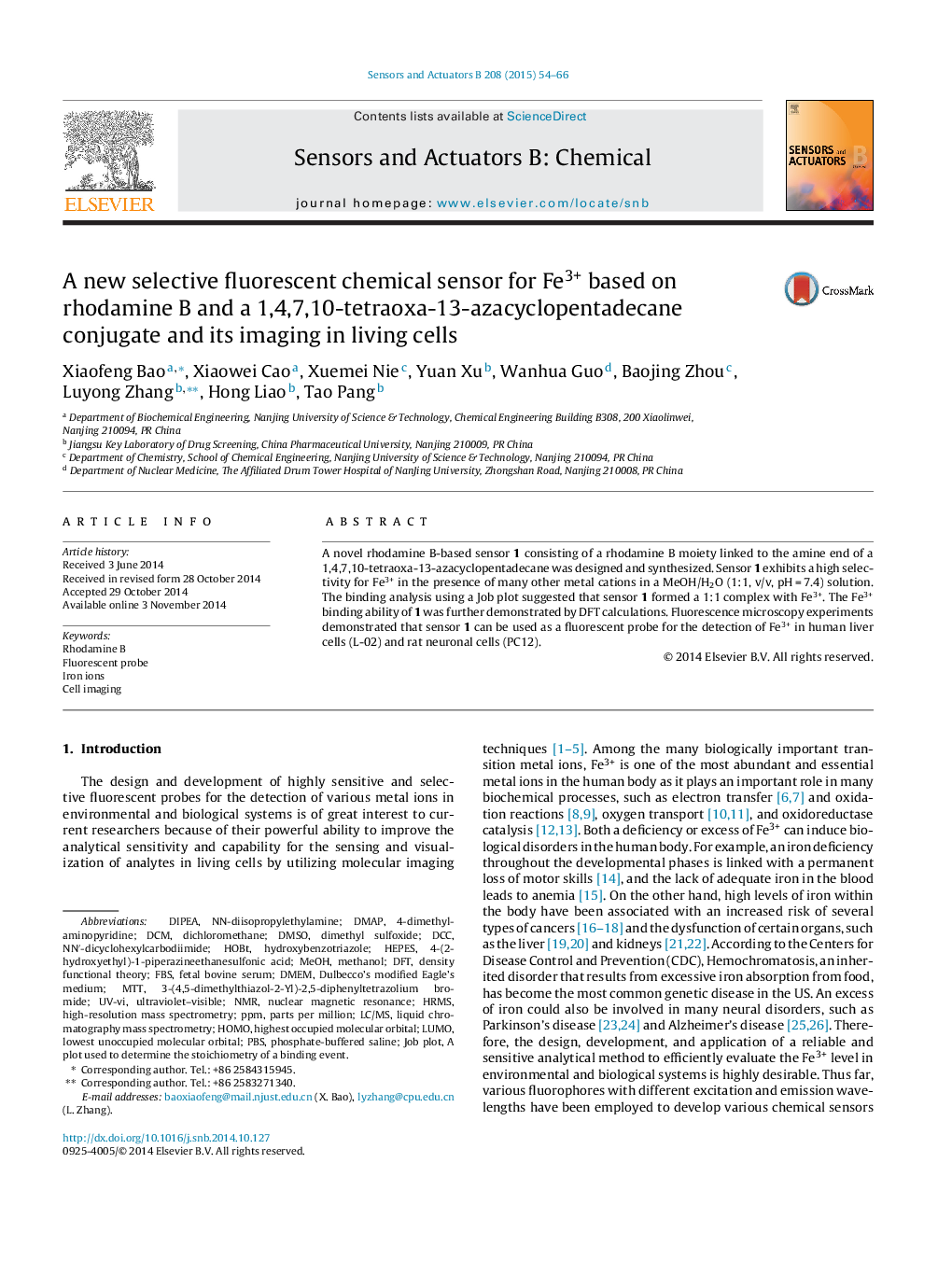| Article ID | Journal | Published Year | Pages | File Type |
|---|---|---|---|---|
| 750795 | Sensors and Actuators B: Chemical | 2015 | 13 Pages |
•A novel rhodamine B-based probe 1 consisting of a rhodamine B moiety linked to the amine side of a 1,4,7,10-tetraoxa-13-azacyclopentadecane was synthesized.•The spectra from UV–vis and fluorescence experiments displayed that sensor 1 can be used as a selective chemosensor for Fe3+ in a MeOH/H2O (1:1, v/v, pH 7.4) solution.•Probe 1 was further demonstrated to be a potential probe for detecting Fe3+ in human liver cells (L-02) and rat neuronal (PC12) cells.
A novel rhodamine B-based sensor 1 consisting of a rhodamine B moiety linked to the amine end of a 1,4,7,10-tetraoxa-13-azacyclopentadecane was designed and synthesized. Sensor 1 exhibits a high selectivity for Fe3+ in the presence of many other metal cations in a MeOH/H2O (1:1, v/v, pH = 7.4) solution. The binding analysis using a Job plot suggested that sensor 1 formed a 1:1 complex with Fe3+. The Fe3+ binding ability of 1 was further demonstrated by DFT calculations. Fluorescence microscopy experiments demonstrated that sensor 1 can be used as a fluorescent probe for the detection of Fe3+ in human liver cells (L-02) and rat neuronal cells (PC12).
Graphical abstractA novel rhodamine B-based probe 1 was synthesized. Probe 1 exhibits a high selectivity for Fe3+ in a MeOH/H2O (1:1, v/v, pH 7.4) solution. Fluorescence microscopy experiments demonstrated that probe 1 can be used as a fluorescent probe for the detection of Fe3+ in living cells.Figure optionsDownload full-size imageDownload as PowerPoint slide
